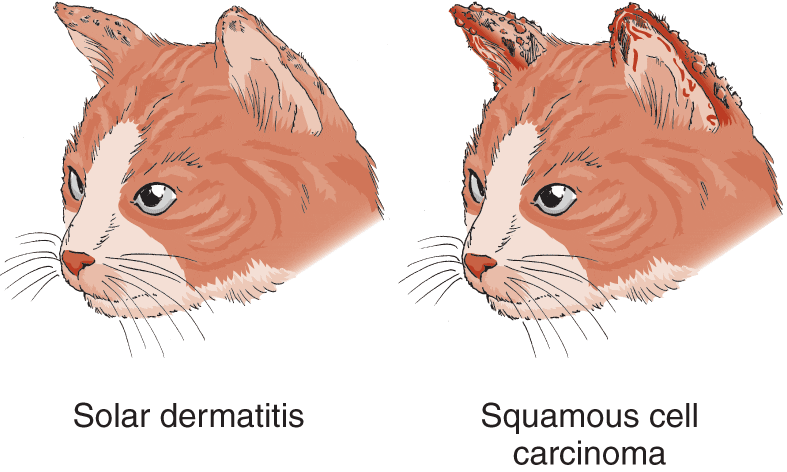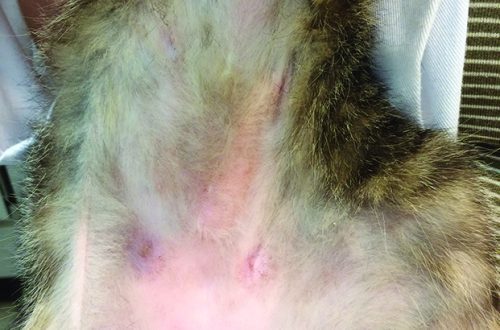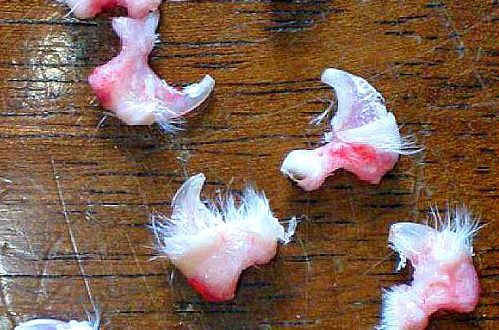
Hot ears in a cat: norm or pathology
Contents
The structure of the cat’s ears
The ears of a cat perform two important functions – hearing and orientation in space. Cats have much better hearing than humans, so they can pick up sounds at a much higher frequency. According to their structure and shape, the pet’s ears can be large and pointed at the tips or small and rounded – it all depends on the breed.
Anatomically, the ears consist of three parts:
- Outer ear. These are the auricle and the external auditory meatus.
- Middle ear. Consists of the tympanic membrane and the auditory ossicles.
- Inner ear – vestibule, cochlea and semicircular canals.
Body temperature: normal or not
The normal body temperature of a cat is several degrees higher than human and is approximately 38-39 degrees. If the temperature seems higher, you can measure it yourself or contact your veterinarian. The temperature may rise in a hot room or after physical activity, but it quickly returns to normal.
There is much less hair on the ears of a cat than on the rest of the body, and therefore it may appear that the ears are hot. If at the same time the animal behaves as usual, does not show signs of illness, eats well, goes to the toilet and plays – everything is in order. If the cat has hot ears and at the same time she refuses water and food, constantly sleeps or hides, it is necessary to contact a veterinarian as soon as possible. These symptoms may be a sign of a serious illness.
Ear diseases and symptoms
Ear diseases in the feline family are divided into two main groups – diseases of the external ear and diseases of the inner and middle ear.
1. Diseases of the outer ear. They are mainly associated with injuries or other physical effects.
Wounds and injuries. During fights with other cats or with active combing with a paw, a pet can get severe scratches, lacerations or bite wounds. In most cases, such injuries heal on their own, unless an infection has been introduced.
Hematomas. They occur due to ruptures of small blood vessels during active combing or injuries. Sometimes surgery is required for treatment.
Solar dermatitis. It’s an allergic reaction to the sun. Most often, cats with thin skin and light hair suffer from solar dermatitis. If the cat walks outside, it is advisable to use sunscreen.
Scabies. It occurs when an animal is infected with parasites and is accompanied by itching, fever and redness of the tips of the ears. It is treated with special drugs.
Ticks. Before a seasonal trip to the country, it is imperative to treat the pet from all types of ticks: ixodid, and others. Tick bites cause itching, irritation, and redness at the bite site. The ixodid tick is visible and can be pulled out by yourself.
Parasitic and bacterial otitis. The inflammatory process can be caused by infection, tick bites or. For an accurate diagnosis, you should consult a veterinarian.
2. Diseases of the inner and middle ear.
Middle ear infections. These diseases are most common in kittens. Occur due to complications of diseases of the external ear and upper respiratory tract. May be accompanied by fever, itching and irritation. Treatment should be prescribed by a specialist after a thorough examination.
Polyps and tumors of the middle ear. Benign and malignant tumors can develop in cats of any age. They occur quite rarely, but with any changes in the appearance of the pet’s ears and with an increase in temperature, it is better to contact the clinic.
You should not engage in the diagnosis and treatment of a pet on your own. For any signs of illness in a fluffy pet, be sure to consult with your veterinarian or with a doctor from the nearest clinic.
See also:
- Ear mites in cats and kittens: signs, symptoms and treatment
- Dry nose in a cat: when to worry
- 7 tips for daily cat care





